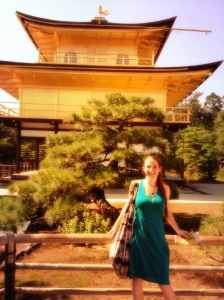If you haven’t been following, there has been a lot of buzz in the science writing community this week regarding sexism, racism, and sexual harassment, which was all spurred by a couple of disturbing events. Although most topics have already been covered, I wanted to recount the events for myself to sort it all out, but like others, I feel that this sort of info should be shared widely to raise awareness.
It all started last Friday with this. Danielle Lee, author of Urban Scientist at Scientific American, was offered a position as a guest blogger for Biology Online. When she learned that the position would be unpaid, she respectfully declined. She was answered with this: “Are you an Urban Scientist or an Urban Whore.”
Obviously this is unacceptable – sexist, disrespectful, and unprofessional. Yet, after Lee published a post describing the incident, it was promptly removed from the Scientific American site. The editor, Mariette DiChristina, tweeted and later published a hand-wavy apology at best. Due to the community’s overwhelming response (#IstandwithDNLee), the post was reinstated, and Mr. Smalltime Editor, “Ofek” as Lee referred to him, was fired.
Justice served?
Well, it gets more complicated. In this case Mr. Smalltime Editor was, rightfully, given the ax. Yet unfortunately, firing one Ofek doesn’t rid the world of sexism – case in point, Mr. Bigtime Editor…
During SciAm’s blunders with the Ofek situation, Monica Byrnes, a writer and playwright, updated a year-old blog post about a sexual harassment experience; she altered it to name her assailant – none other than SciAm’s blog editor, Mr. Bigtime, Bora Zivkovic (see his apology).
It took while for the #scicomm community to digest this. Many see Zivkovic as an inspiration, a friend, and an important mentor. Many folks wondered if Byrne did the right thing naming Zivkovic, citing that he shouldn’t be thrown under the bus for one minor slip up, especially since he had apologized. Yet many, including myself, suspected that this was likely not an isolated incident and were angered that Mr. Bigtime was being held to different standards than Mr. Smalltime.
https://twitter.com/MeinHermitage/status/390197992952573953
In solidarity many other bloggers came forward with their stories of sexism and harassment, and in what Hannah Waters describes as “the hardest thing I’ve ever had to write,” she came forward to tell her story of the discomfort imposed on her by Zivkovic. Her post started the #ripplesofdoubt tag, in which many science writers are now reevaluating their career trajectories based on Zivkovic’s influence (or lack there of).
Although Zivkovic acknowledged his mistakes, the situation remained open. Then yesterday, much to the satisfaction of the community, ScienceOnline announced that Zivkovic resigned. Later, word was spread at SciAm that Zivkovic’s would be taking leave.
Justice served?
Probably not. Many were left with a sense of disillusionment, a sense of “so now what?” Then in an absolutely gut-wrenching post, Kathleen Raven came forward with yet another account of harassment by Zivkovic. More questions were raised: How long had this predator been allowed to prey on young women? How many will still come forward? Or worse, how many won’t?
Later today, Zivkovic fully resigned from SciAm.
And so what’s to come? Maybe this experience has brought new awareness to the mentor-mentee power dynamic; maybe Laura Helmuth’s mantra of “Don’t be a creep” will hold more weight given the circumstances; maybe skeptics will be more aware of “gaslighting;” maybe people will become stronger allies; maybe things will go back to the way they were.
Regardless, the role of the communicators involved has been expanded – it has become apparent that we need to make it our job to bring more awareness to the forms and effects of harassment. Ladybits is leading this front and has now set up a page specifically for people to share, vent, and grieve about their stories. Hopefully with this awareness will come empowerment.
Let’s keep the conversation going.
